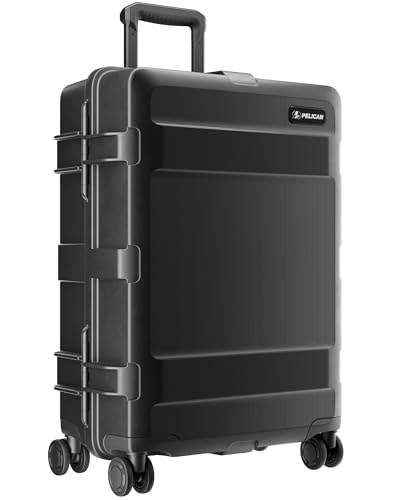



Maximize your carry-on space by utilizing packing cubes or compression bags. These tools help organize items and minimize volume, allowing for more efficient use of available space. Select versatile clothing that can be mixed and matched, reducing the number of pieces needed.
Prioritize travel-sized toiletries and consider solid alternatives to liquids to avoid spills and comply with TSA regulations. A well-planned wardrobe can fit into a compact bag, emphasizing layers instead of bulkier items. Each piece should serve multiple functions, such as a jacket that doubles as a blanket.
Invest in a quality carry-on that meets airline size requirements, and familiarize yourself with the specific regulations of the airlines you’ll be using. Packing strategically means leaving excess items behind, focusing on what truly matters for your adventure.
Choosing the Right Bag for Carry-On Only Travel
Selecting an appropriate bag is critical for any trip relying solely on cabin baggage. Focus on size, organization, and durability to enhance your experience.
- Size: Ensure your carry-on meets airline dimensions–typically 22 x 14 x 9 inches. A compact size allows easier maneuverability.
- Weight: Lightweight materials reduce strain. Aim for a bag under 5 pounds to maximize packing capacity.
- Style: Backpacks offer comfort and versatility. Consider options designed for outdoor activities, such as the best fishing backpack with rod holders, which also features organizational pockets.
- Accessibility: Choose designs with multiple compartments and easy-to-reach pockets for essential items like travel papers, electronics, and personal items.
- Durability: Look for robust fabrics and reliable zippers. Weather-resistant materials provide extra protection for belongings.
Prioritize features that align with your style and needs, ensuring the selected bag enhances functionality without compromising comfort or compliance with airline policies.
Packing techniques to maximize space in your carry-on
Utilize packing cubes to compartmentalize items, optimizing space and easing organization. This method keeps clothing and accessories tidy, allowing for efficient retrieval and reducing wrinkling.
Roll rather than fold
Rolling clothes minimizes creases and creates more space compared to traditional folding. Perform this technique for t-shirts, pants, and lightweight garments. Combine this with packing cubes for enhanced organization.
Wear bulkier items
Don heavier shoes and jackets during transportation. This tactic conserves carry-on capacity and maximizes comfort throughout the travel day.
Use every inch of available space by stuffing socks and small items inside shoes. This method minimizes wasted space and keeps footwear from losing shape.
Consider multi-functional garments, such as reversible clothing or attire that can serve multiple purposes. This strategy reduces the number of items required.
Limit toiletries to travel-sized containers or purchase necessities at the destination. This approach frees up valuable space in your bag.
Adopt a minimalistic mindset. Pack only what’s necessary and focus on versatile pieces that can be mixed and matched, supporting various outfits while keeping the load light.
By applying these strategies, you’ll maximize your carry-on capacity, making for a smoother experience during your travels.
Essential Items to Include for Different Types of Trips
Prioritize comfort and convenience by including these items based on trip types:
| Trip Type | Must-Have Items |
|---|---|
| Business |
|
| Weekend Getaway |
|
| Outdoor Adventure |
|
| Beach Trip |
|
| Cultural Exploration |
|
Select items wisely to stay within size restrictions while ensuring all essentials are included.
Navigating airline regulations for carry-on luggage
Familiarize yourself with the specific policies of each airline regarding size, weight limits, and permitted items for onboard baggage. Most carriers allow a standard size of 22 x 14 x 9 inches, but this may vary. Measure your bag to ensure compliance before arriving at the airport.
Be aware of the restrictions on liquids, gels, and aerosols; typically, containers must be no larger than 3.4 ounces (100 milliliters) and fit within a single quart-sized bag. Emphasize solid items, as they usually present fewer issues during security checks.
Checking prohibited items
Review the list of items banned from carry-on compartments, which often includes sharp objects, various sporting goods, and self-defense items. Utilize online resources provided by airlines and security authorities to stay updated on what’s allowed, ensuring a smooth passage through screenings.
Make use of personal items
Maximize your packing strategy by using personal items strategically. Many airlines permit an additional personal item, like a purse or laptop bag, which can help to separate essential items and keep them easily accessible. This practice can be particularly handy if you need to retrieve your electronics or personal belongings quickly. Always check what counts as a personal item on the airline’s website.
When preparing for a vacation at a hot tub, consider packing a best umbrella for hot tub to shelter yourself from the sun. Additionally, effective laundry solutions like the best front load fully automatic washing machine can also benefit travelers who aim for efficiency in managing their clothes during longer trips.
Travel Accessories That Can Enhance Your Journey Without Checked Luggage
Consider a packing cube set to maximize organization and space efficiency in carry-on bags. These containers help separate clothing, accessories, and toiletries, enabling easy access during transit.
Multi-functional Items
Choose versatile garments such as scarves that can serve as wraps or blankets during chilly flights. Look for clothes that can easily transition from day to evening, reducing the overall items needed.
Tech Gadgets
A portable charger ensures that electronic devices remain powered throughout the trip. Noise-canceling headphones enhance comfort during flights, while lightweight e-readers can reduce the need for bulky books. Additionally, compact travel-sized toiletries in reusable containers can help conform to liquid restrictions, ensuring compliance with airline policies.







